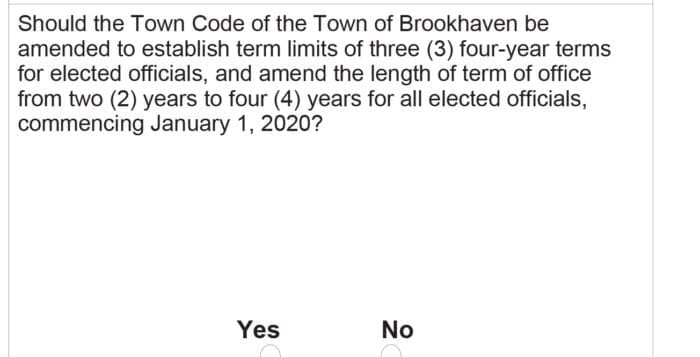Recent tragedies have shown just how good and inspired our community can be if everyone bands together behind a cause.
On Sept. 30 Boy Scouts from Troop 161, based in Shoreham, were hit by an alleged drunk driver while hiking in Manorville. While four young men suffered injuries, 12-year-old Andrew McMorris, a student at Shoreham-Wading River’s Albert G. Prodell Middle School, was pronounced dead the morning after he was hit.
The news quickly spread on social media, and the community rose rapidly to the occasion. Red ribbons still fly across Long Island from mailboxes, street signs and even entrances to Suffolk County parks. A GoFundMe to support the troop has already raised close to $19,000, and the wakes and funeral for the young man were packed by those wishing to pay respect.
We’ve seen this groundswell of community activism in other places in response to hard times elsewhere. On Sept. 25 Port Jefferson Village was inundated with water that in some places reached as high as 4 or 5 feet following intense rain. Port Jeff’s Theatre Three saw the worst of that damage, as the flooding destroyed props, costumes, play scripts, books and thousands of dollars in electrical equipment, not to mention structural damage to the old building. Yet again we saw the community step up to aid its local theater. Galvanized by news stories and online crowd funding campaigns, dozens of volunteers came to the theater to aid in the cleanup, and theater personnel reported it started receiving thousands of dollars in donations the morning right after the flood, which have continued.
The rise of online connectivity can prove a useful tool in times like these, yet still there is a pervading sense that the world is becoming more insular. With election season right on the horizon and with tensions rising, we kindly remind people it’s OK to be a good neighbor even in not-so-tragic times.
We in the news business know just how powerful and stimulating a community coming together can be. Yes, reporters are people too, and it’s hard not to be heartened, even in the face of mind-numbing tragedy, to drive to work every day with countless red ribbons lining both sides of the road like a landing strip.
Imagine if it didn’t take tragedy to excite such fervor in the local community. Two childhood friends in Commack have worked to bring Commack Day back to Hoyt Farm after a near-30-year absence. The lifelong friends and Commack natives James Manikas and Dean Spinato got the community involved by posting the idea to local Facebook groups, driving their support through connectivity.
There are so many issues that Long Island currently faces, from the threat of nitrogen in coastal waters, rising sea levels and a lack of affordable housing, yet we at TBR News Media watched how well the community can come together to get things done in times of need. It would be great to see the community come together more on an average day.
Recent tragedies have shown just how good and inspired our community can be if everyone bands together behind a cause.
On Sept. 30 Boy Scouts from Troop 161, based in Shoreham, were hit by an alleged drunk driver while hiking in Manorville. While four young men suffered injuries, 12-year-old Andrew McMorris, a student at Shoreham-Wading River’s Albert G. Prodell Middle School, was pronounced dead the morning after he was hit.
The news quickly spread on social media, and the community rose rapidly to the occasion. Red ribbons still fly across Long Island from mailboxes, street signs and even entrances to Suffolk County parks. A GoFundMe to support the troop has already raised close to $19,000, and the wakes and funeral for the young man were packed by those wishing to pay respect.
We’ve seen this groundswell of community activism in other places in response to hard times elsewhere. On Sept. 25 Port Jefferson Village was inundated with water that in some places reached as high as 4 or 5 feet following intense rain. Port Jeff’s Theatre Three saw the worst of that damage, as the flooding destroyed props, costumes, play scripts, books and thousands of dollars in electrical equipment, not to mention structural damage to the old building. Yet again we saw the community step up to aid its local theater. Galvanized by news stories and online crowd funding campaigns, dozens of volunteers came to the theater to aid in the cleanup, and theater personnel reported it started receiving thousands of dollars in donations the morning right after the flood, which have continued.
The rise of online connectivity can prove a useful tool in times like these, yet still there is a pervading sense that the world is becoming more insular. With election season right on the horizon and with tensions rising, we kindly remind people it’s OK to be a good neighbor even in not-so-tragic times.
We in the news business know just how powerful and stimulating a community coming together can be. Yes, reporters are people too, and it’s hard not to be heartened, even in the face of mind-numbing tragedy, to drive to work every day with countless red ribbons lining both sides of the road like a landing strip.
Imagine if it didn’t take tragedy to excite such fervor in the local community. Two childhood friends in Commack have worked to bring Commack Day back to Hoyt Farm after a near-30-year absence. The lifelong friends and Commack natives James Manikas and Dean Spinato got the community involved by posting the idea to local Facebook groups, driving their support through connectivity.
There are so many issues that Long Island currently faces, from the threat of nitrogen in coastal waters, rising sea levels and a lack of affordable housing, yet we at TBR News Media watched how well the community can come together to get things done in times of need. It would be great to see the community come together more on an average day.






